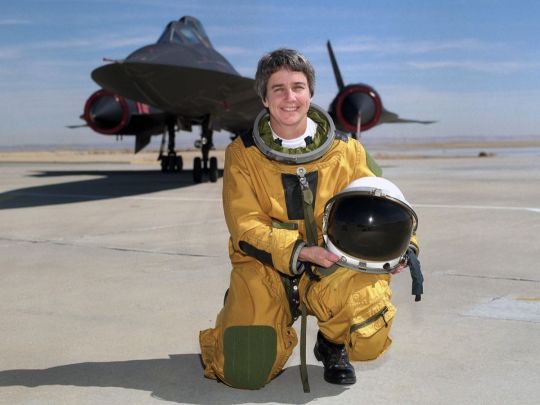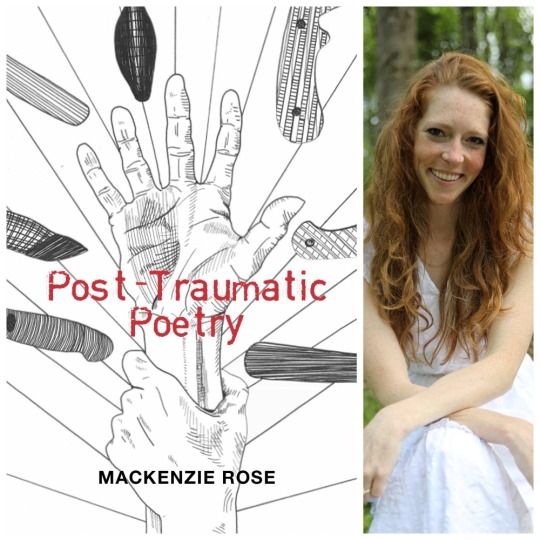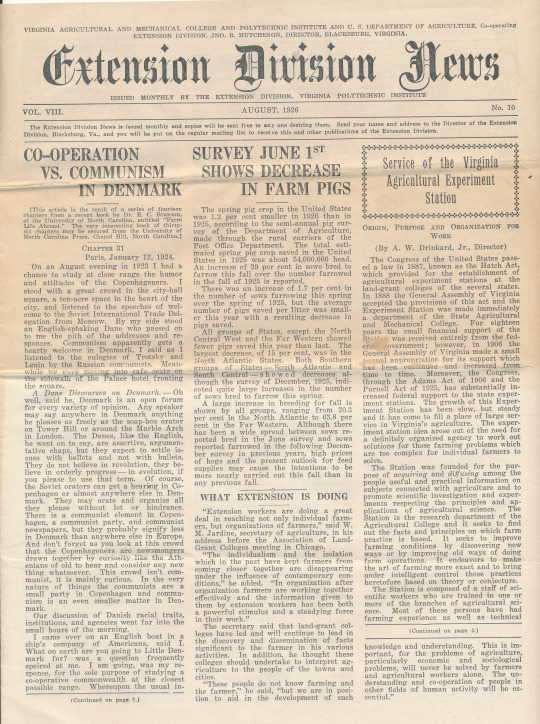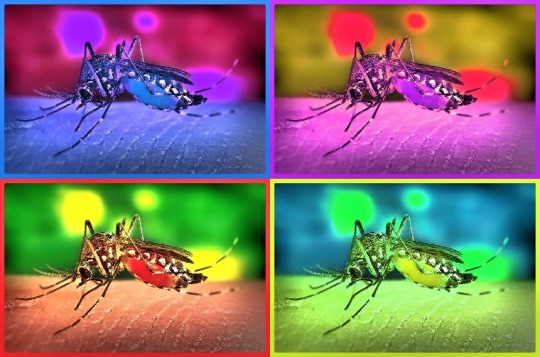#virginia polytechnic institute
Explore tagged Tumblr posts
Text
#fashion#shopmycloset#shopping#style#ebay#ebaystore#clothes#Hat#hats#cap#caps#ncaa#vt#virginia tech#Virginia Polytechnic Institute
0 notes
Text
Professor of Space Science and Systems (Open Rank)
Virginia Polytechnic Institute and State University Blacksburg, VA Permanent Full-time The Kevin T. Crofton Department of Aerospace and Ocean Engineering at Virginia Tech seeks applications for a tenure-track faculty position in space science and systems at any rank effective August 2025. We seek candidates in all areas relevant to space science and systems who will build and sustain a…

View On WordPress
0 notes
Text
#parthenogenesis#american crocodile#crocodylus acutus#crocodylidae#crocodilian#pseudosuchia#archosaur#asexual reproduction
1K notes
·
View notes
Text
College Shitlist (boycott these colleges)
This is the updating list of colleges where pro-palestine protests are present that have brutalized/arrested/punished their students for protesting the ongoing palestinian genocide.
REMEMBER: DO NOT GIVE YOUR MONEY TO THESE COLLEGES. PROTESTS ON THESE CAMPUSES ARE IMPORTANT, BUT KEEPING YOUR INTELLIGENCE AND MONEY AWAY FROM THESE ABHORRENT INSTITUTIONS DIMINISHES THEIR POWER. THEIR ONLY POWER COMES FROM THEIR STUDENTS AND THEIR MONEY. YOU HAVE THE POWER TO TAKE THEIR PRESTIGE AWAY.
In No Particular Order:
Princeton University
Massachusetts Institute of Technology
University of California - Berkeley
Stanford University
Virginia Tech
University of Michigan - Ann Arbor
University of Washington
University of Minnesota - Twin Cities
University of Wisconsin - Madison
Harvard University
Yale University
University of California - Los Angeles
Cornell University
University of Pittsburgh
University of Chicago
University of Southern California
University of California - San Diego
Tufts University
Northeastern University
Stony Brook University
University of Connecticut
University of California - Merced
University of Massachusetts - Amherst
University of Iowa
University of Arizona
Arizona State University
University of California - Irvine
George Washington University
DePaul University
University of Pennsylvania
Pomona College
University of Texas - Dallas
The New School
University of Houston
University of Rochester
University of New Mexico
Duke University
New York University
University of North Carolina - Chapel Hill
Barnards College
University of Vanderbilt
Rutgers University - New Brunswick
Columbia University
Portland State University
University of Oregon
California Polytechnic Institute Humboldt
California Polytechnic University - San Luis Obispo
Northern Arizona University
University of Utah
University of Kansas
University of Illinois - Urbana Champaign
Washington University
New Mexico State University
University of Texas - Austin
Tulane University
University of South Florida
University of North Florida
University of Florida
Emory University
University of Georgia
Mercer University
Notre Dame University
Case Western Reserve University
The Ohio State University
Virginian Commonwealth University
University of Virginia
University of Buffalo
State University of New York - Purchase
State University of New York - New Paltz
Brown University
Brandeis University
Dartmouth College
University of New Hampshire
Emerson College
CUNY City College of New York
International List:
University of Amsterdam
University of Alberta
University of Queensland
University of Sydney
University of Melbourne
Australian National University
University of New South Wales
University of Calgary
University of Oxford
Feel free to share this list, send me additional colleges to add (WITH SOURCES), and/or request more information on a particular college
#palestine#gaza#free palestine#boycott israel#free gaza#princeton#yale#harvard#cornell#brown#dartmouth#mit#nyu#gaza genocide#notre dame#stanford#boycott#divest from israel#Oxford#Amsterdam#sydney#Palestine protests
48 notes
·
View notes
Text

Remembering Marta Bohn-Meyer, the only woman to fly in the SR-71 Blackbird as a crewmember
The SR-71 Blackbird
In the 1960’s, the US Air Force (USAF) developed the SR-71 Blackbird, a plane that could travel more than 3 times as fast as the sound produced by its own engines.
SR-71 T-Shirts

CLICK HERE to see The Aviation Geek Club contributor Linda Sheffield’s T-shirt designs! Linda has a personal relationship with the SR-71 because her father Butch Sheffield flew the Blackbird from test flight in 1965 until 1973. Butch’s Granddaughter’s Lisa Burroughs and Susan Miller are graphic designers. They designed most of the merchandise that is for sale on Threadless. A percentage of the profits go to Flight Test Museum at Edwards Air Force Base. This nonprofit charity is personal to the Sheffield family because they are raising money to house SR-71, #955. This was the first Blackbird that Butch Sheffield flew on Oct. 4, 1965.
Throughout its nearly 24-year career, the SR-71 spy plane remained the world’s fastest and highest-flying operational aircraft. Flying at Mach 3+ from 80,000 feet, it could survey 100,000 square miles of Earth’s surface per hour. And in the off chance an enemy tried to shoot it down with a missile, all the Blackbird had to do was speed up and outrun it.
Marta Bohn-Meyer, the only woman who flew aboard the legendary SR-71 Blackbird as a crewmember
The photos in this post features Marta Bohn-Meyer, the only woman who flew aboard the legendary SR-71 Blackbird as a crewmember.
Born in 1957, Marta Bohn-Meyer began her work in aerospace as a student at Rensselaer Polytechnic Institute in New York in the late 1970s. According to Cosmosphere Blog, for three years, she participated in a cooperative research and education program the school held at NASA’s Langley Research Center in Hampton, Virginia.
When she finished school, she joined NASA’s Armstrong Flight Research Center (then Dryden) as an aeronautical research and operations engineer. She would eventually rise to the post of chief engineer after 22 years at this same location, after a series of roles with increasing responsibility, including:
Remembering Marta Bohn-Meyer, the only woman to fly in the SR-71 Blackbird as a crewmember

Beginning in her teen years, Marta Bohn-Meyer’s favorite place was in and around airplanes both at work and while off duty. She was an accomplished private pilot and flight engineer, and was the first female crew member to fly at Mach 3 in the SR-71.
Project manager for the F-16 XL Supersonic Laminar Flow Control
Deputy director of aerospace projects
Director of safety and mission assurance
Director of flight operations
Time in the SR-71B with the stick piloting the iconic HABU
In 1991, Bohn-Meyer became the first woman to crew the triple-sonic SR-71 Blackbird. She was assigned as a NASA flight engineer and had been with NASA twelve years by then. Her role was to help NASA obtain high-speed, high-altitude data to improve future aircraft design. The only other woman to have flown in the famously fast plane was Congresswoman Beverly Byron who rode as a VIP guest in 1985.
Bohn-Meyer (who was married to NASA test pilot Bob Mayer) not only flew the Blackbird as Reconnaissance Systems Officer (RSO) but she also had time in the SR-71B with the stick piloting the iconic HABU.
The story of Marta Bohn-Meyer, the only woman to fly in the SR-71 Blackbird as a crewmember

Marta Bohn-Meyer, Dryden’s chief engineer at the time of her recent death, celebrates her successful 1991 first flight at triple supersonic speeds in the SR-71 Blackbird. Bohn-Meyer was one of two women ever to fly in the storied aircraft and the only one to do so as a crew member; Congresswoman Beverly Byron took a guest VIP ride in 1985.
Only woman who flew aboard the legendary SR-71 Blackbird as a crewmember passing away
Widely known as a precision aerobatic pilot, Bohn-Meyer died on Sep. 18, 2005, when the Giles G-300 she flew in an aerobatic practice routine crashed near Oklahoma City.
Retired NASA deputy administrator Fred Gregory recalls being first assigned to mentor her when she began at Langley as a student:
“She was smart, detail-oriented, opinionated and professional well beyond her age.”
Kevin Petersen, director for Dryden (now Armstrong) Flight Research Center at the time of her passing, remarked on Bohn-Meyer’s “strength and her commitment to all she pursued.”
SR-71 print

This print is available in multiple sizes from AircraftProfilePrints.com – CLICK HERE TO GET YOURS. SR-71A Blackbird 61-7972 “Skunkworks”
“We committed lives to this person’s judgment every day; she was the last line of defense against complacency. And she never let me—or Dryden—down.”
@Habubrats71 via X
12 notes
·
View notes
Text

NASA scientific balloon flights to lift off from Antarctica
NASA's Scientific Balloon Program has returned to Antarctica's icy expanse to kick off the annual Antarctic Long-Duration Balloon Campaign, where two balloon flights will carry a total of nine missions to near space. Launch operations will begin mid-December from the agency's Long Duration Balloon camp located near the U.S. National Science Foundation's McMurdo Station on the Ross Ice Shelf.
"Antarctica is our cornerstone location for long-duration balloon missions, and we always look forward to heading back to 'the ice,'" said Andrew Hamilton, acting chief of NASA's Balloon Program Office at the agency's Wallops Flight Facility in Virginia. "It's a tremendous effort to stage a campaign like this in such a remote location, and we are grateful for the support provided to us by the U.S. National Science Foundation, New Zealand, and the U.S. Air Force."
This year's Antarctic campaign includes investigations in astrophysics, space biology, heliospheric research, and upper atmospheric research, along with technology demonstrations. The campaign's two primary missions include:
GAPS (General Anti-Particle Spectrometer), led by Columbia University in New York, is an experiment to detect anti-matter particles produced by dark matter interactions. The anti-particles stemming from these interactions in our galaxy can only be observed from a suborbital platform or in space, since Earth's atmosphere shields us from the cosmic radiation. GAPS aims to provide an unprecedented level of sensitivity to certain classes of anti-particles, allowing the exploration of a currently unexplored energy regime of the elusive dark matter.
Salter Test Flight Universal, led by NASA's Columbia Scientific Balloon Facility in Palestine, Texas, will test and validate long-duration balloon and subsystems, while supporting several piggyback missions on the flight.
Piggyback missions, or smaller payloads, riding along with the Salter Test Flight Universal mission include:
MARSBOx (Microbes in Atmosphere for Radiation, Survival, and Biological Outcomes Experiments), led by the U.S. Naval Research Laboratory, will expose melanized fungus, called Aspergillus niger, to the stratosphere's extreme radiation and temperature fluctuations, low atmospheric pressure, and absence of water—conditions much like the surface of Mars. Knowledge of how this fungus adapts to protect itself in this harsh environment could lead to the development of treatments to protect astronauts from high radiation exposure.
EMIDSS-6 (Experimental Module for Iterative Design of Satellite Subsystems 6), led by National Polytechnical Institute − Mexico, is a technological platform with experimental design and operational validation of instrumentation that will collect and store data from the stratospheric environment to contribute to the study of climate change.
SPARROW-6 (Sensor Package for Attitude, Rotation, and Relative Observable Winds—6), led by NASA's Balloon Program Office at NASA Wallops, will demonstrate relative wind measurements using an ultrasonic anemometer designed for the balloon float environment.
WALRUSS (Wallops Atmospheric Light Radiation and Ultraviolet Spectrum Sensor), led by the Balloon Program Office at NASA Wallops, is a technology demonstration of a sensor package capable of measuring the total ultraviolet wavelength spectrum and ozone concentration.
INDIGO (INterim Dynamics Instrumentation for Gondolas), led by the Balloon Program Office at NASA Wallops, is a data recorder meant to measure the shock, rotation, and attitude of the gondola during the launch, float, and landing phases of flight. Data will be used to improve understanding of the dynamics of flight and to inform the design of future components and hardware.
The remaining two piggyback missions are led by finalists of NASA's FLOATing DRAGON (Formulate, Lift, Observe, And Testing; Data Recovery And Guided On-board Node) Balloon Challenge, sponsored by the Balloon Program Office at NASA Wallops and managed by the National Institute of Aerospace.
The challenge was created for student teams to design, build, and fly an autonomous aerial vehicle, deployed from a gondola during a high-altitude balloon flight. The teams' student-built data vaults will be safely dropped from around 120,000 feet with the capability to target a specific landing point on the ground to manage risk. The missions participating in the Antarctic campaign are Purdue University's Purdue DRAGONfly, and University of Notre Dame's IRIS v3.
NASA's zero-pressure balloons, used in the Antarctic campaign, are made of a thin plastic film and are capable of lifting up to 8,000 pounds of payload and equipment to altitudes above 99.8% of Earth's atmosphere. Zero-pressure balloons, which typically have a shorter flight duration from the loss of gas during the day-to-night cycle, can support long-duration missions in polar regions during summer.
The constant daylight of Antarctica's austral summer and stable stratospheric wind conditions allow the balloon missions to remain in near space for days to weeks, gathering large amounts of scientific data as they circle the continent.
TOP IMAGE: A scientific balloon is inflated during NASA’s 2023 Antarctic campaign in McMurdo, Antarctica. Credit: NASA/Scott Battaion
LOWER IMAGE: NASA’s Long Duration Balloon camp is located about eight miles from the U.S. National Science Foundation’s McMurdo Station on Antarctica’s Ross Ice Shelf. Credit: NASA/Scott Battaion

4 notes
·
View notes
Photo

These centipedes ‘see’ sunlight, even without eyes
Finding may reveal how other subterranean arthropods stay hidden
You wouldn’t want to step on a Chinese red-headed centipede. These venomous pencil-length arthropods scutter beneath the leaves of East Asian and Australian forests, their black, multisegmented bodies and bright red pincers hidden from view. They creep unseen in the darkness despite not being able to tell light from dark because they lack eyes entirely.
Now, researchers have figured out how these centipedes avoid the sunlight they can’t see. When the rays heat their antennae, they spark a heat-related response that alerts the leggy arthropods to seek shelter, researchers report today in the Proceedings of the National Academy of Sciences.
The antennae are packed with muscles and covered in sensitive hairlike projections that help the bugs make sense of their surroundings, says Paul Marek, an entomologist at the Virginia Polytechnic Institute and State University who studies eyeless millipedes and was not involved in the new study. “They use them like a blind person's cane to essentially feel around in the dark.”...
Read more: https://www.science.org/content/article/these-centipedes-see-sunlight-even-without-eyes
photograph by Yasunori Koide | Wikipedia CC
61 notes
·
View notes
Photo

Virginia Tech Mass Shooting
On April 16, 2007, 32 people were killed when student Seung-Hui Cho opened fire on the Virginia Polytechnic Institute and State University campus. At 7:15 am that morning, Cho, a senior on campus, opened fire on a male and female student in his dormitory building before fleeing outside. Police were soon on the scene but, unaware of who the suspect was, could not locate Cho until two hours later when he opened fire for the second time. At 9:40 am, Cho entered a classroom building, chained and locked several exit doors, and entered multiple classrooms, where he shot and killed 32 people and wounded a dozen more. Shortly after his shooting spree, Cho died from a self-inflicted gunshot wound.
On April 18, NBC News received a package from Cho containing a video of him rambling about “wealthy brats,” among other things. After the shooting, no evidence indicated that Cho had specifically targeted certain students or classrooms. In 2011, Virginia Tech was fined by the US Department of Education for not shutting down the campus and sending out a campus-wide warning after the first two victims were discovered
27 notes
·
View notes
Photo

Researchers report on metal alloys that could support nuclear fusion energy
At the end of 2022, researchers at Lawrence Livermore National Laboratory announced they had observed a net energy gain through nuclear fusion for the very first time. This monumental milestone toward fusion energy represents a huge leap forward in powering our homes and businesses with the carbon-neutral energy source. But converting this scientific achievement into a practical power source also requires new technologies to make a fusion-powered society a reality.
Scientists at Pacific Northwest National Laboratory (PNNL) and Virginia Polytechnic Institute and State University (Virginia Tech) are helping bring this goal to fruition through their materials research efforts. Their recent work, published in Scientific Reports, makes the case for tungsten heavy alloys and shows how they can be improved for use in advanced nuclear fusion reactors by mimicking the structure of seashells.
"This is the first study to observe these material interfaces at such small length scales," said Jacob Haag, first author of the research paper. "In doing so we revealed some of the fundamental mechanisms which govern material toughness and durability."
Read more.
#Materials Science#Science#Metals#Alloys#Nuclear fusion#Tungsten#Biomimicry#Nacre#Strength of materials#Materials processing#Microstructures
42 notes
·
View notes
Text

Virginia Tech Mass Shooting
On April 16, 2007, 32 people were killed when student Seung-Hui Cho opened fire on the Virginia Polytechnic Institute and State University campus. At 7:15 am that morning, Cho, a senior on campus, opened fire on a male and female student in his dormitory building before fleeing outside. Police were soon on the scene but, unaware of who the suspect was, could not locate Cho until two hours later when he opened fire for the second time. At 9:40 am, Cho entered a classroom building, chained and locked several exit doors, and entered multiple classrooms, where he shot and killed 32 people and wounded a dozen more. Shortly after his shooting spree, Cho died from a self-inflicted gunshot wound.
On April 18, NBC News received a package from Cho containing a video of him rambling about “wealthy brats,” among other things. After the shooting, no evidence indicated that Cho had specifically targeted certain students or classrooms. In 2011, Virginia Tech was fined by the US Department of Education for not shutting down the campus and sending out a campus-wide warning after the first two victims were discovered
13 notes
·
View notes
Link
5 min read NASA-Funded Science Projects Tuning In to ‘Eclipse Radio’ On April 8, 2024, a total solar eclipse will cross parts of the United States. For millions of people along the path of totality, where the Moon will completely cover the Sun, it may feel like an eerie daytime darkness has descended as temperatures drop and wind patterns change. But these changes are mild compared to what happens some 100 to 400 miles above our heads in an electrically conductive layer of our atmosphere known as the ionosphere, where the “false night” of an eclipse is amplified a hundredfold. Three NASA-funded experiments will investigate the eclipse’s effects on the ionosphere through the power of radio, a technology well suited to studying this enigmatic layer of our atmosphere. The Aug. 21, 2017, total solar eclipse douses Umatilla National Forest in shadow, darkening the sky and rimming the horizon with a 360 degree sunset. NASA/Mara Johnson-Groh Whether you’ve heard of the ionosphere or not, you’ve likely taken advantage of its existence. This electric blanket of particles is critical for long-distance AM and shortwave radio. Radio operators aim their transmitters into the sky, “bouncing” signals off this layer and around the curvature of Earth to extend their broadcast by hundreds or even thousands of miles. The ionosphere is sustained by our Sun. The Sun’s rays separate negatively charged electrons from atoms, creating the positively charged ions that the ionosphere is named for. When night falls, over 60 miles of the ionosphere disappears as ions and electrons recombine into neutral atoms. Come dawn, the electrons are freed again and the ionosphere swells in the Sun’s illumination – a daily cycle of “breathing” in and out at a global scale. A total solar eclipse is a scientific goldmine – a rare chance to observe a natural experiment in action. On April 8 the three NASA-funded projects listed below are among those “tuning in” to the changes wrought by a blotted-out Sun. SuperDARN The Super Dual Auroral Radar Network, or SuperDARN, is a collection of radars located at sites around the world. They bounce radio waves off of the ionosphere and analyze the returning signal. Their data reveals changes in the ionosphere’s density, temperature, and location (i.e. movement). The 2024 eclipse will pass over three U.S.-based SuperDARN radars. A team of scientists led by Bharat Kunduri, a professor at the Virginia Polytechnic Institute and State University, have been busy preparing for it. An aerial view of a SuperDARN radar site outside Hays, Kansas. Credit: Fort Hays State University “The changes in solar radiation that occur during a total solar eclipse can result in a ’thinning’ of the ionosphere,” Kunduri said. “During the eclipse, SuperDARN will operate in special modes designed to monitor the changes in the ionosphere at finer spatiotemporal scales.” Kunduri’s team will compare SuperDARN’s measurements to predictions from computer models to answer questions about how the ionosphere responds to a solar eclipse. HamSCI While some experiments rely on massive radio telescopes, others depend more on people power. The Ham Radio Science Citizen Investigation, or HamSCI, is a NASA citizen science project that involves amateur or “ham” radio operators. On April 8, ham radio operators across the country will attempt to send and receive signals to one another before, during, and after the eclipse. Led by Nathaniel Frissell, a professor of Physics and Engineering at the University of Scranton in Pennsylvania, HamSCI participants will share their radio data to catalog how the sudden loss of sunlight during totality affects their radio signals. Students work with Dr. Frissell in the ham radio lab on campus. Simal Sami ’24 (in orange), who is part of Scranton’s Magis Honors Program in STEM; Dr. Frissell; and Veronica Romanek ’23, a physics major. Photo by Byron Maldonado courtesy of The University of Scranton This experiment follows similar efforts completed during the 2017 total solar eclipse and the 2023 annular eclipse. “During the 2017 eclipse, we found that the ionosphere behaved very similar to nighttime,” Frissell said. Radio signals traveled farther, and frequencies that typically work best at night became usable. Frissell hopes to continue the comparison between eclipses and the day/night cycle, assessing how widespread the changes in the ionosphere are and comparing the results to computer models. RadioJOVE Some radio signals don’t bounce off of the ionosphere – instead, they pass right through it. Our Sun is constantly roiling with magnetic eruptions, some of which create radio bursts. These long-wavelength bursts of energy can be detected by radio receivers on Earth. But first they must pass through the ionosphere, whose ever-changing characteristics affect whether and how these signals make it to the receiver. This radio image of the Sun was made with a radio telescope by astronomer Stephen White (University of Maryland). The radio emission was detected with the Very Large Array radio telescope at a wavelength of 4.6 GHz. The image shows bright regions (red and yellow) of million-degree gas above sunspots. Credit: Courtesy NRAO / AUI / NSF The RadioJOVE project is a team of citizen scientists dedicated to documenting radio signals from space, especially Jupiter. During the total solar eclipse, RadioJOVE participants will focus on the Sun. Using radio antenna kits they set up themselves, they’ll record solar radio bursts before, during, and after the eclipse. During the 2017 eclipse, some participants recorded a reduced intensity of solar radio bursts. But more observations are needed to draw firm conclusions. “With better training and more observers, we’ll get better coverage to further study radio propagation through the ionosphere,” said Chuck Higgins, a professor at Middle Tennessee State University and founding member of RadioJOVE. “We hope to continue longer-term observations, through the Heliophysics Big Year and beyond.” Find out more about the April 8, 2024, solar eclipse on NASA’s eclipse page. By Miles HatfieldNASA’s Goddard Space Flight Center, Greenbelt, Md.
4 notes
·
View notes
Text

NEW FROM FINISHING LINE PRESS: Post-Traumatic Poetry by Mackenzie Rose
On SALE now! Pre-order Price Guarantee: https://www.finishinglinepress.com/product/post-traumatic-poetry-by-mackenzie-rose/
Post-Traumatic Poetry is at once deeply personal and frighteningly universal. Mackenzie Rose‘s collection of #poems shares her story from being a young woman in an abusive relationship to becoming a #domestic #violence #survivor. Her poems take the reader through her first glimpses of her partner’s narcissism and gas-lighting to the moment he tried to kill her. They untangle her medical trauma and find her traversing the world with a new identity while learning to understand her physical and emotional scars.
Mackenzie Rose is a survivor. On August 26, 2017, only two days after her 28th birthday, the man with whom she shared a home plunged a chef’s knife into her throat, past her tongue, and through the roof of her mouth. After eight days of recovery in the hospital, Mackenzie re-entered the world with a limited ability to speak, a PEG feeding tube, and PTSD (post-traumatic stress disorder). After relentless therapies, she began to reclaim some semblance of normality and retrained her voice to carry her new narrative. Mackenzie is a professor of Communications and English at Shenandoah University and a PhD student of trauma studies at Virginia Polytechnic Institute and State University. She can be found speaking at public functions about destigmatizing trauma. With her dog, Bertie, Mackenzie Rose frequently escapes to the beautiful wilderness of the Shenandoah National Park to recharge and find peace in Nature’s healing qualities.
For more information, please visit rosestorytelling.com.
Please share/repost #flpauthor #preorder #AwesomeCoverArt #read #poems #literature #poetry
#poetry#flp authors#preorder#flp#poets on tumblr#american poets#chapbook#chapbooks#finishing line press#small press
3 notes
·
View notes
Text
Professor of Naval Architecture or Ocean Engineering (Open Rank)
Virginia Polytechnic Institute and State University Blacksburg, VA Permanent Full-time The Kevin T. Crofton Department of Aerospace and Ocean Engineering at Virginia Tech seeks applications for a tenure-track faculty position in naval architecture or ocean engineering at any rank effective August 2025. The successful applicant will be responsible for teaching ocean vehicle design. We seek…

View On WordPress
0 notes
Text

Recent Acquisition - Ephemera Collection
Extension Division News, Virginia Polytechnic Institute. August 1926.
6 notes
·
View notes
Text
Vedci zistili, kedy priťahujete komárov. Týmto prípravkom sa vyhnite

Čochvíľa začnú útočiť v plnej sile - komáre. Malý hmyz dokáže spôsobiť veľké nepríjemnosti, od „obyčajného“ svrbenia až po prenášanie smrteľných chorôb. Aj preto ich vedci podrobne študujú a najnovšie prišli so zaujímavým objavom.
Výskumníci vo svojej najnovšej štúdii tvrdia, že komáre môžu byť priťahované mydlom. O komároch je totiž známe, že keď sa neživia krvou, dopĺňajú príjem cukru nektárom.
Umývanie sa mydlom sa pritom môže zdať ako rozumná stratégia proti komárom. Vychádzajúc z toho, že ak nás necítia, nemôžu nás uštipnúť.
Štúdia však naznačuje, že namiesto toho, aby nám mydlo pomáhalo byť inkognito, môže z nás urobiť atraktívnejší cieľ. Z pozorovaní vysvitlo, že komáre uprednostnili vôňu dobrovoľníkov, ktorí sa umývali tromi zo štyroch testovaných značiek mydla.
Ktorým prípravkom sa vyhnúť?
„Skutočnosť, že berieme tieto kvetinové, ovocné vône a dávame ich na telo, znamená, že teraz ten istý predmet vonia ako kvetina a človek zároveň,“ povedal Clément Vinauger, ktorý viedol prácu na Virginia Polytechnic Institute and State University.
„Bolo by to, ako keby ste sa zobudili a cítili vôňu niečoho, čo by bolo ako káva aj ako muffiny. Veľmi príťažlivé.“
V štúdii sa však tiež konštatovalo, že účinky mydiel sa medzi ľuďmi trochu líšia, pravdepodobne v dôsledku interakcií medzi mydlami a jedinečným pachovým profilom každého človeka.
Vinauger uviedol: „Je pozoruhodné, že ten istý jedinec, ktorý je pre komáre mimoriadne príťažlivý, keď je neumytý, sa môže stať pre komáre ešte príťažlivejším s jedným druhom mydla a potom sa stane pre komáre odpudzujúcim alebo odpudzujúcim s iným mydlom.“
Vedci dospeli k záveru, že výber mydla by mohol čiastočne vysvetliť, prečo sú niektorí ľudia magnetom na komáre, zatiaľ čo iní vyviaznu bez uštipnutia.
Do štúdie, ktorá bola uverejnená v časopise iScience, boli zapojení štyria dobrovoľníci, ktorí predložili vzorky látok, ktoré mali oblečené na ruke, pričom tie boli buď neumyté, alebo po umytí štyrmi rôznymi značkami mydla - Dial, Dove, Native a Simple Truth.
Samičky komárov - iba samičky sa živia krvou - boli pozorované, ako pristávajú na vzorkách látok, aby sa dalo určiť, čomu dávajú prednosť. Tkanina bola použitá namiesto vystavenia samotných dobrovoľníkov, aby sa vylúčil vplyv vydychovaného oxidu uhličitého, ktorý je pre komáre ��alším dôležitým signálom.
Umývanie s mydlami Dove, Dial a Simple Truth zvýšilo atraktivitu niektorých dobrovoľníkov, ale nie všetkých, zatiaľ čo pranie s mydlom Native komáre skôr odpudzovalo. Vedci uviedli, že relatívne odpudzujúci účinok mydla Native by mohol súvisieť s jeho kokosovou vôňou, keďže existujú určité dôkazy, že kokosové oleje sú prirodzeným odstrašujúcim prostriedkom pre komáre.
2 notes
·
View notes
Text




Marta Bohn-Meyer (1957-2005)
In memory of a remarkable woman who helped break the glass ceiling in aviation. Sadly, she passed away in an accident 18 years ago. Marta was the only woman who flew in the SR 71 as a crew member.
In 1991, Marta Bohn-Meyer became the first woman to crew the triple-sonic SR-71 Blackbird.
Born in 1957, Marta Bohn-Meyer began her work in aerospace as a student at Rensselaer Polytechnic Institute in New York in the late 1970s. According to Cosmosphere Blog, for three years, she participated in a cooperative research and education program the school held at NASA’s Langley Research Center in Hampton, Virginia.
When she finished school, she joined NASA’s Armstrong Flight Research Center (then Dryden) as an aeronautical research and operations engineer. •Project manager for the F-16 XL Supersonic Laminar Flow Control
•Deputy director of aerospace projects
•Director of safety and mission assurance
•Director of flight operations
She was assigned as a NASA flight engineer and had been with NASA for twelve years. Her role was to help NASA obtain high-speed, high-altitude data to improve future aircraft design.
(The only other woman to have flown in the famously fast SR-71 was Congresswoman Beverly Byron, who rode as a VIP guest in 1985.)
Marta was known as a precision aerobatic pilot. Bohn-Meyer died Sept. 18, 2005, when the Giles G-300 she flew in an aerobatic practice routine crashed near Oklahoma. "She joins an elite group of female aviators.
She was married to NASA test pilot Bob Mayer
Linda Sheffield
@Habubrtas71 via X

6 notes
·
View notes